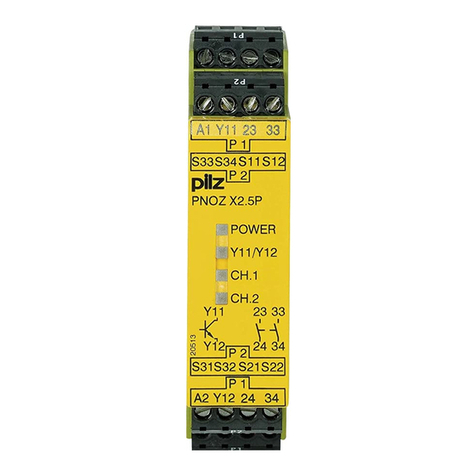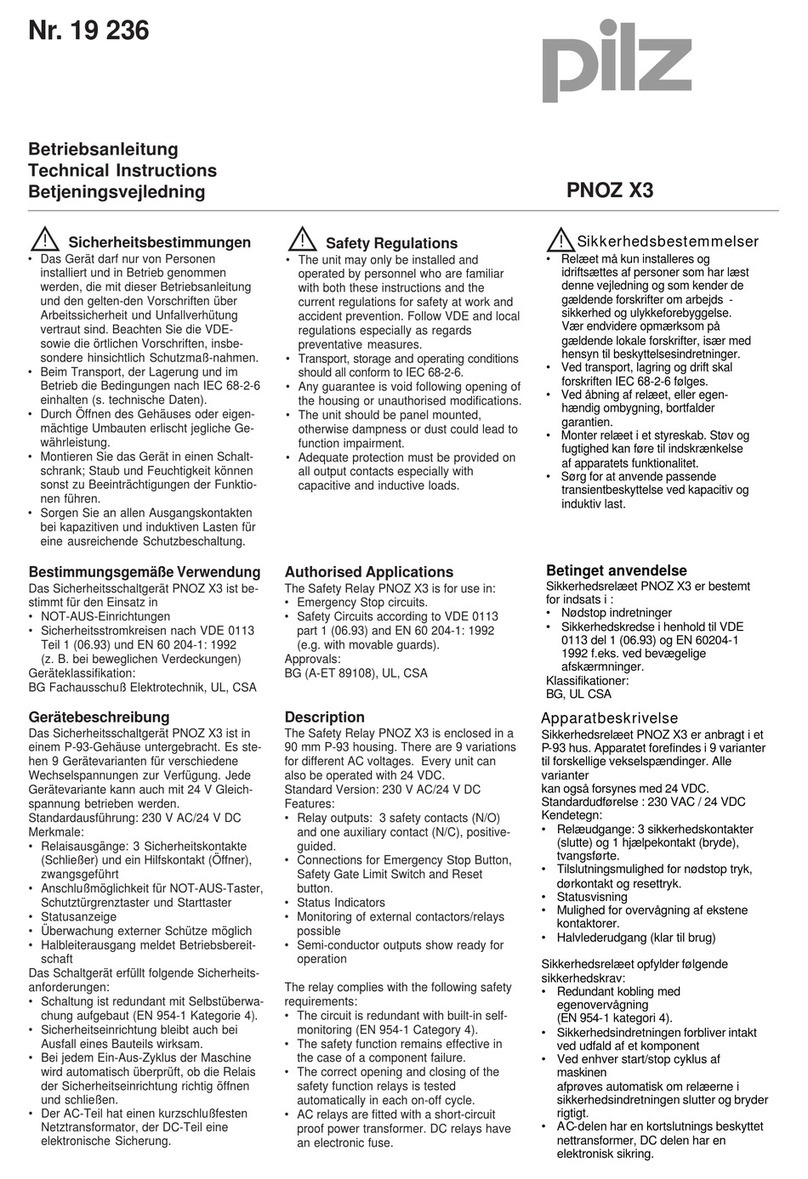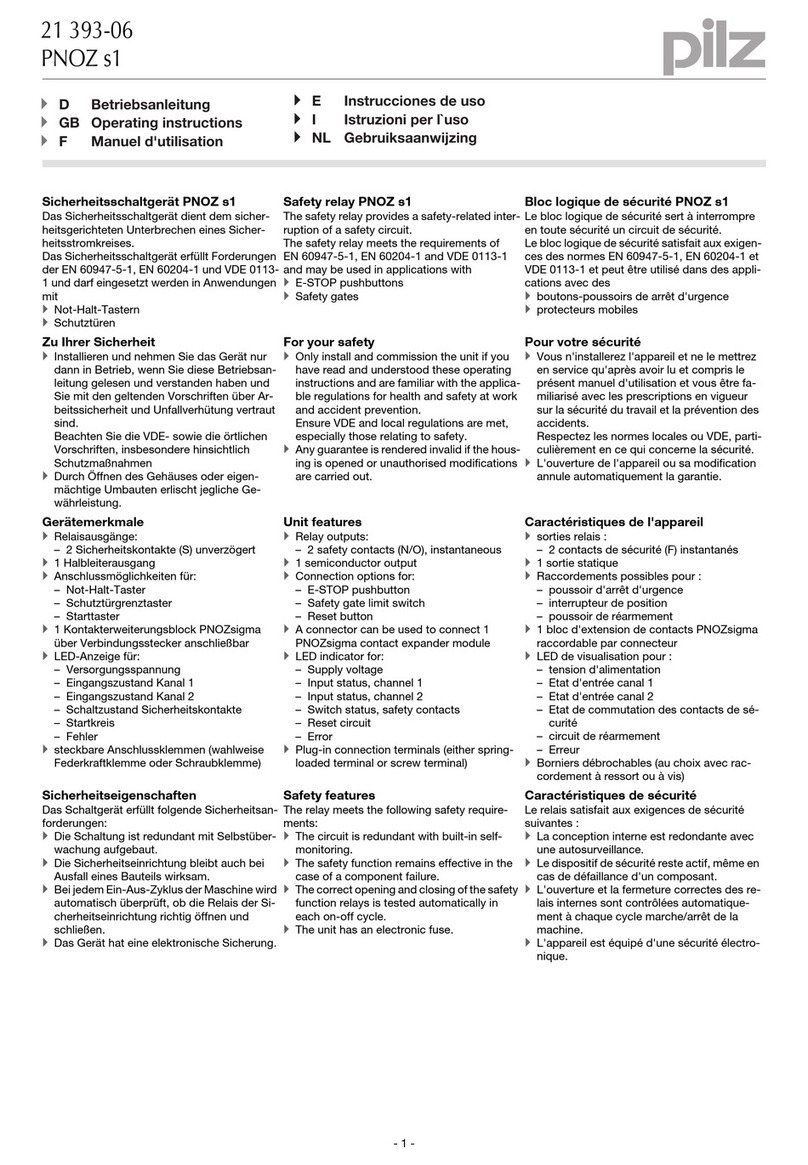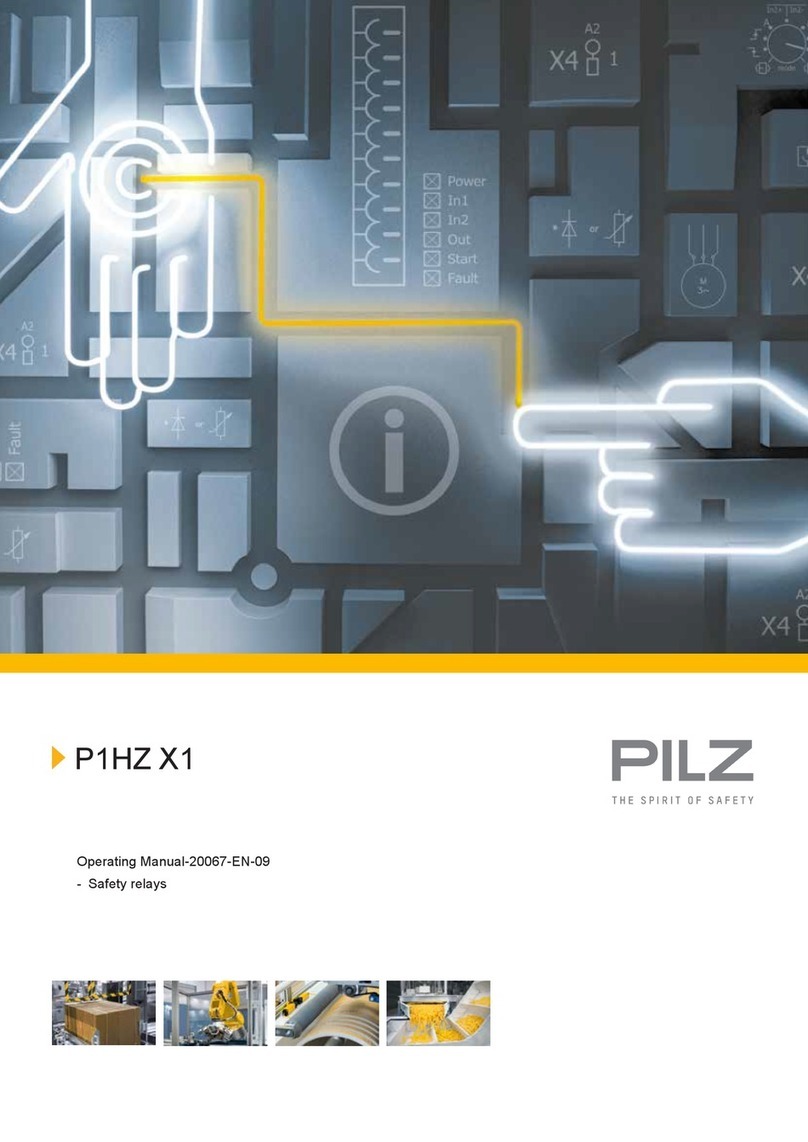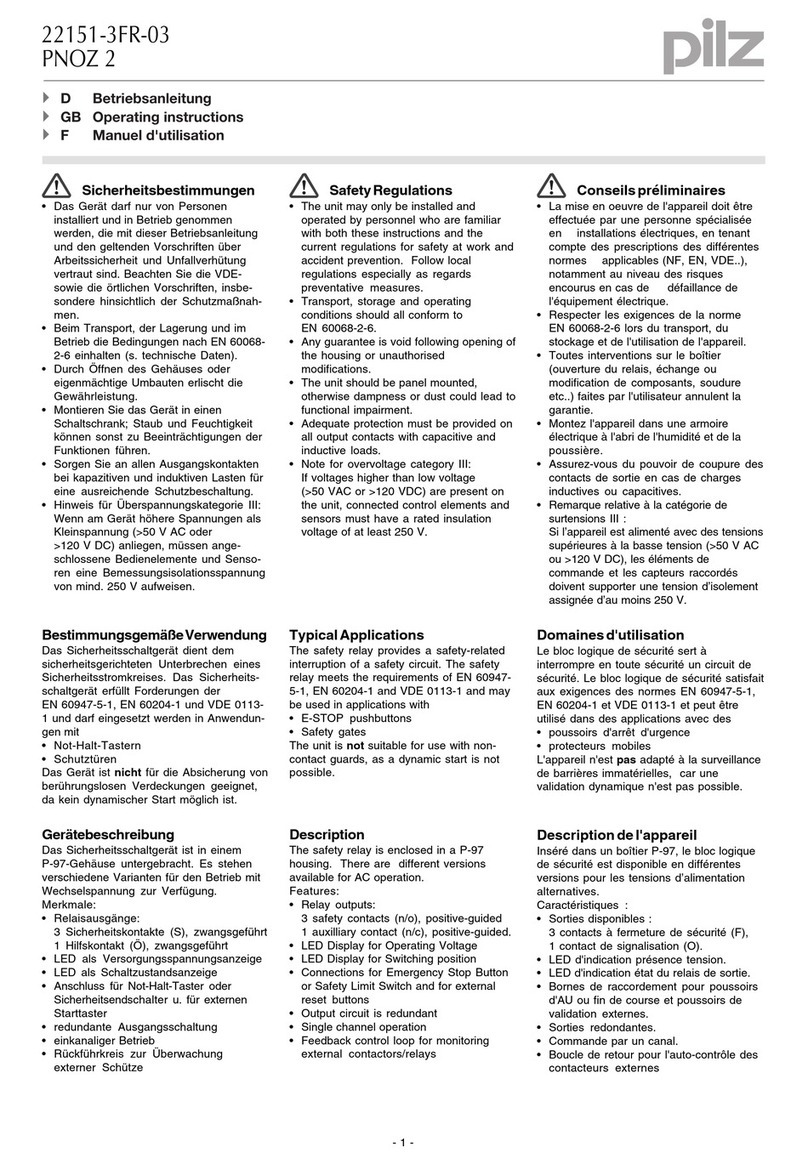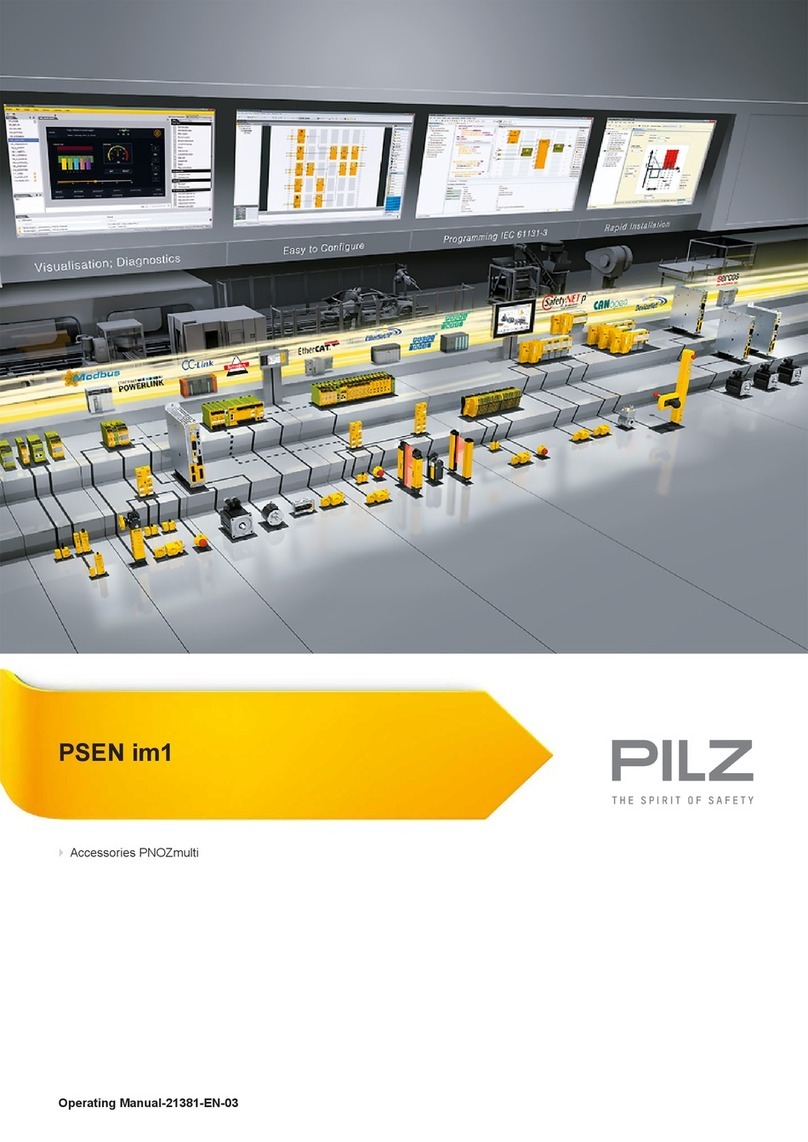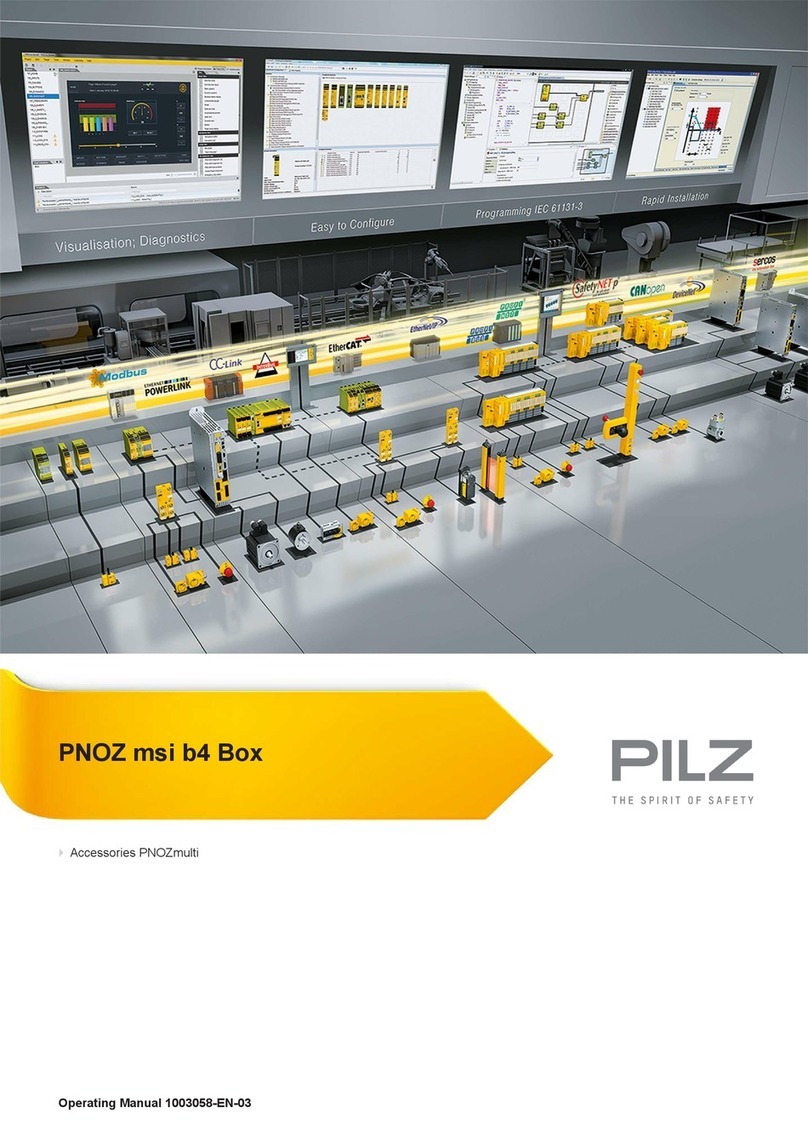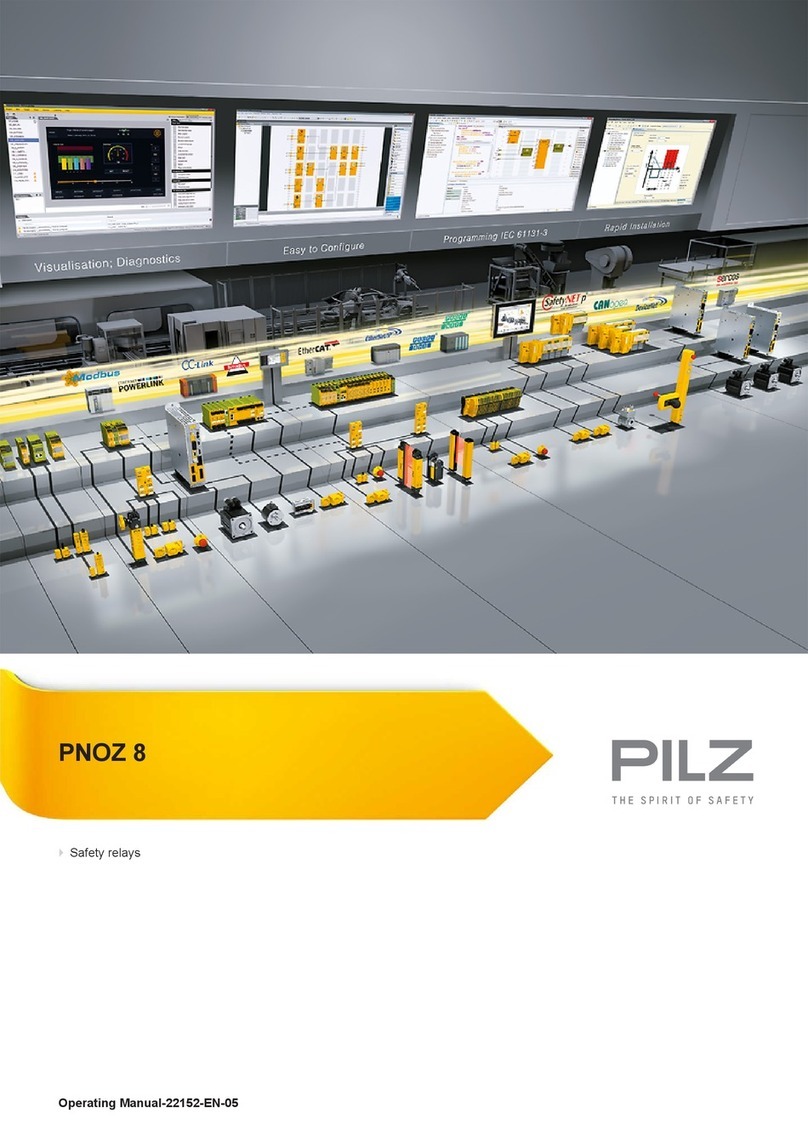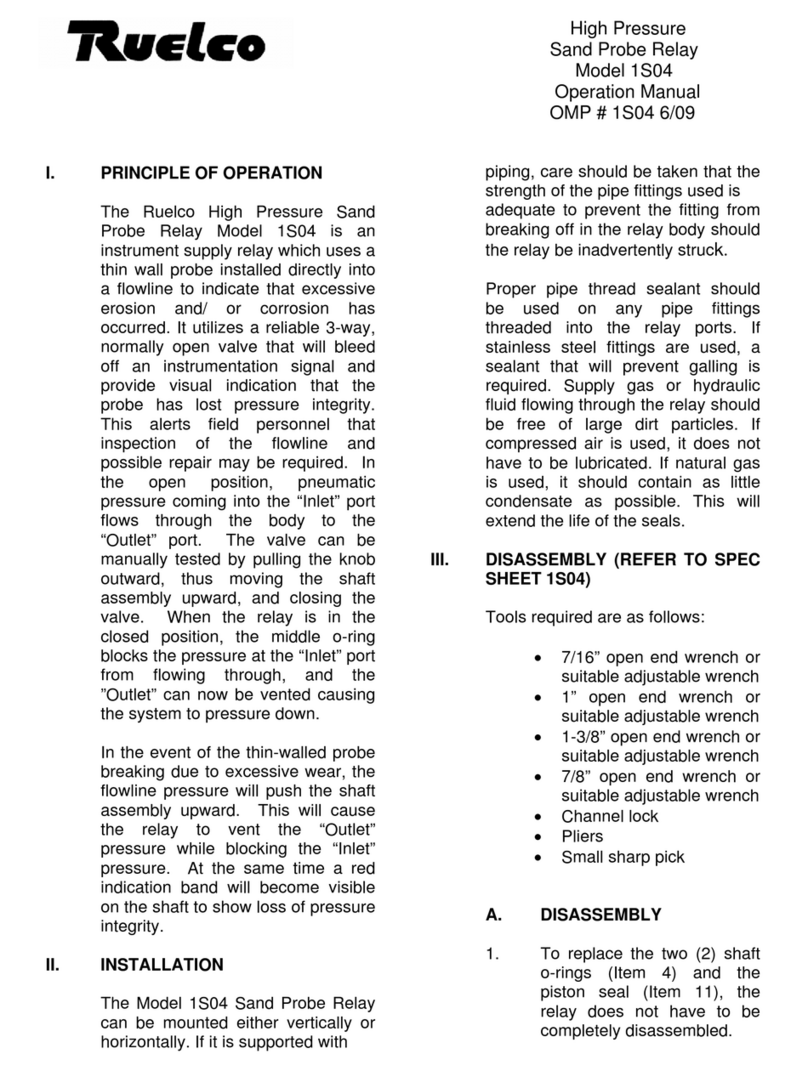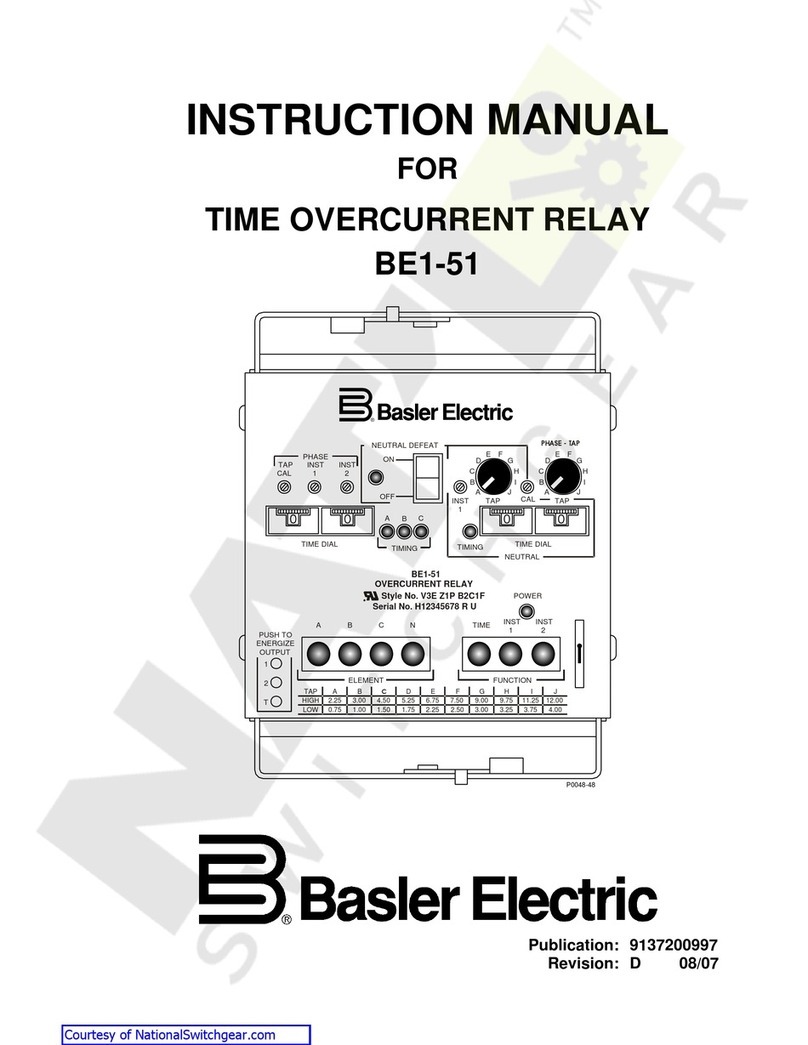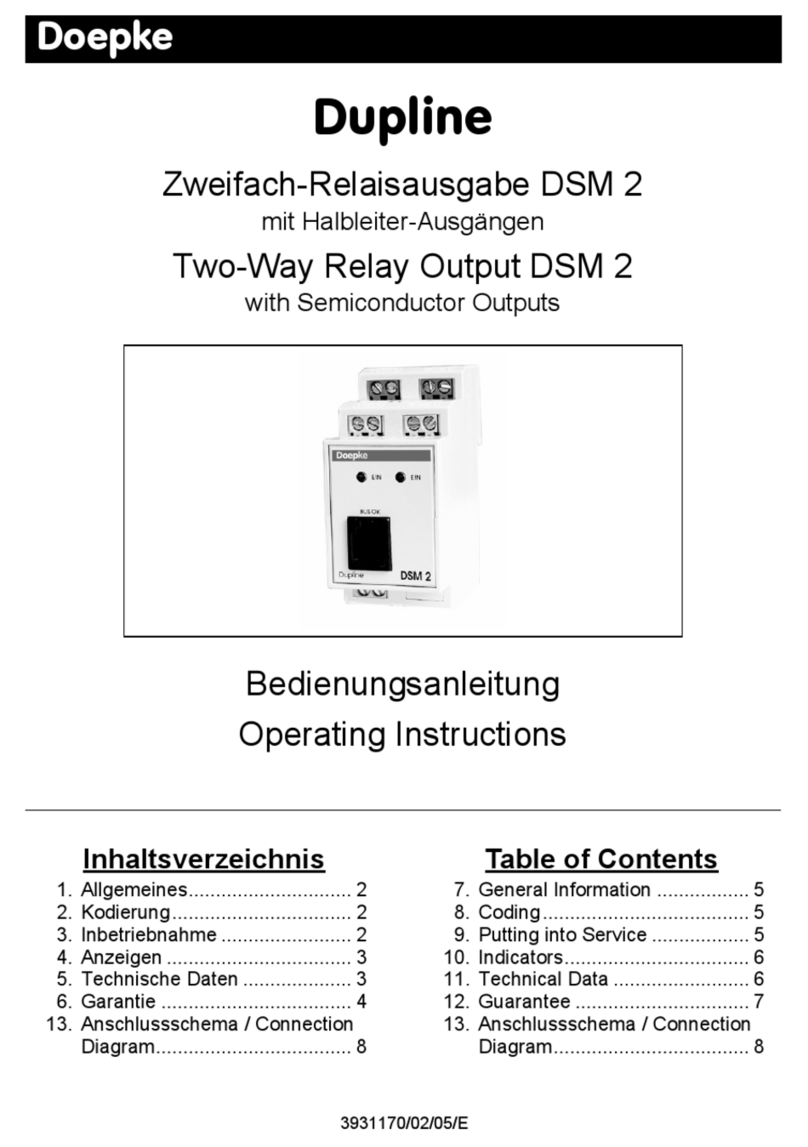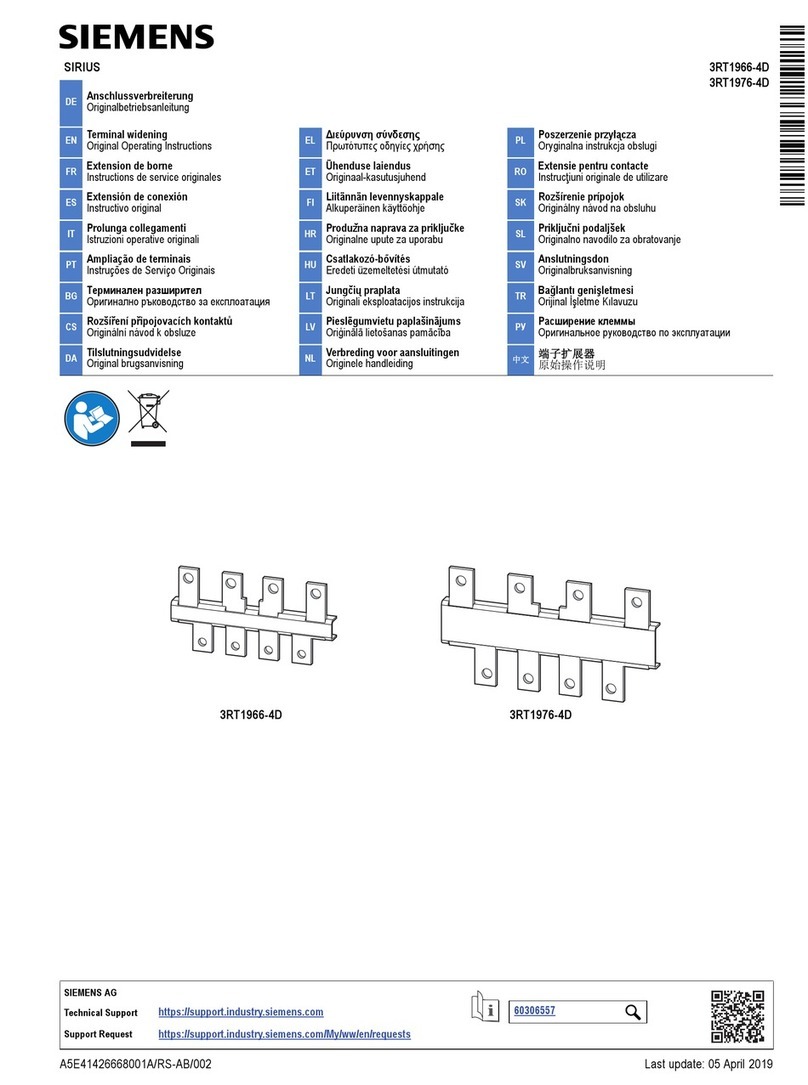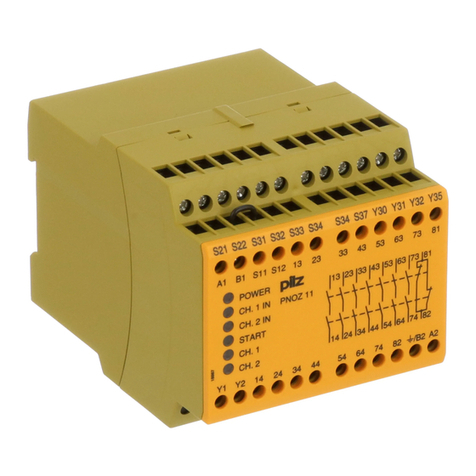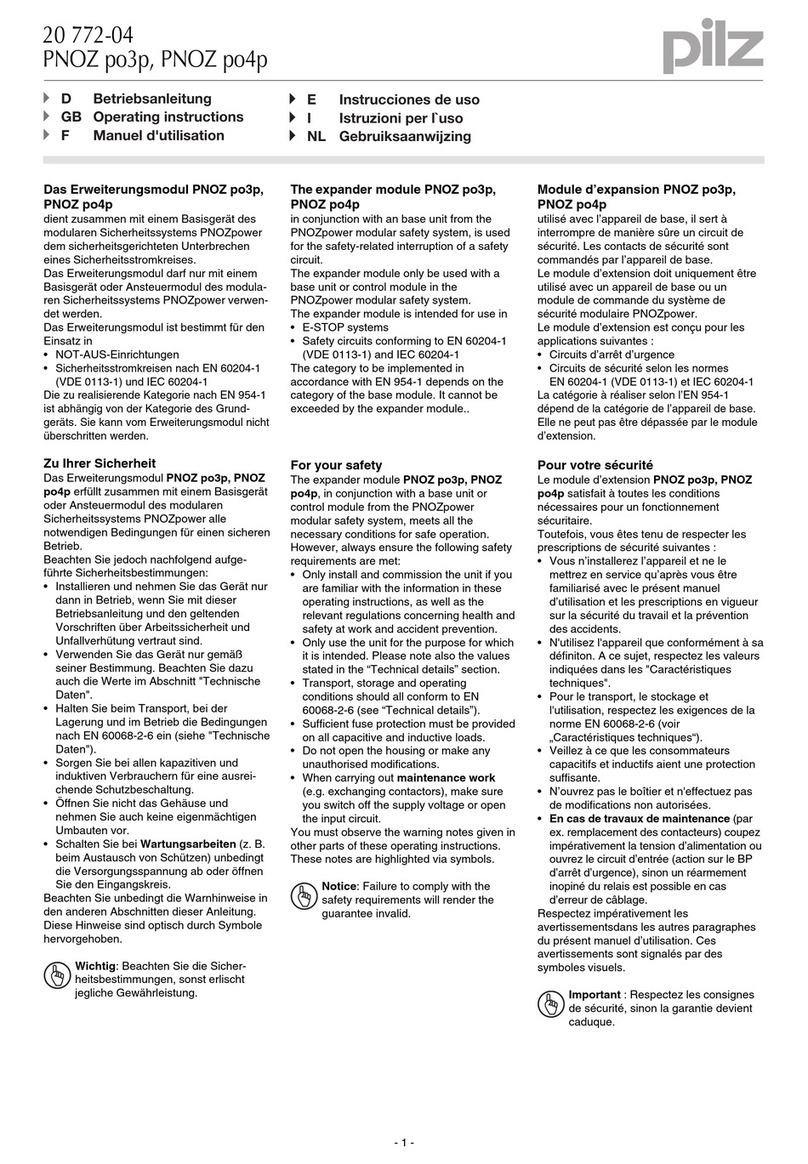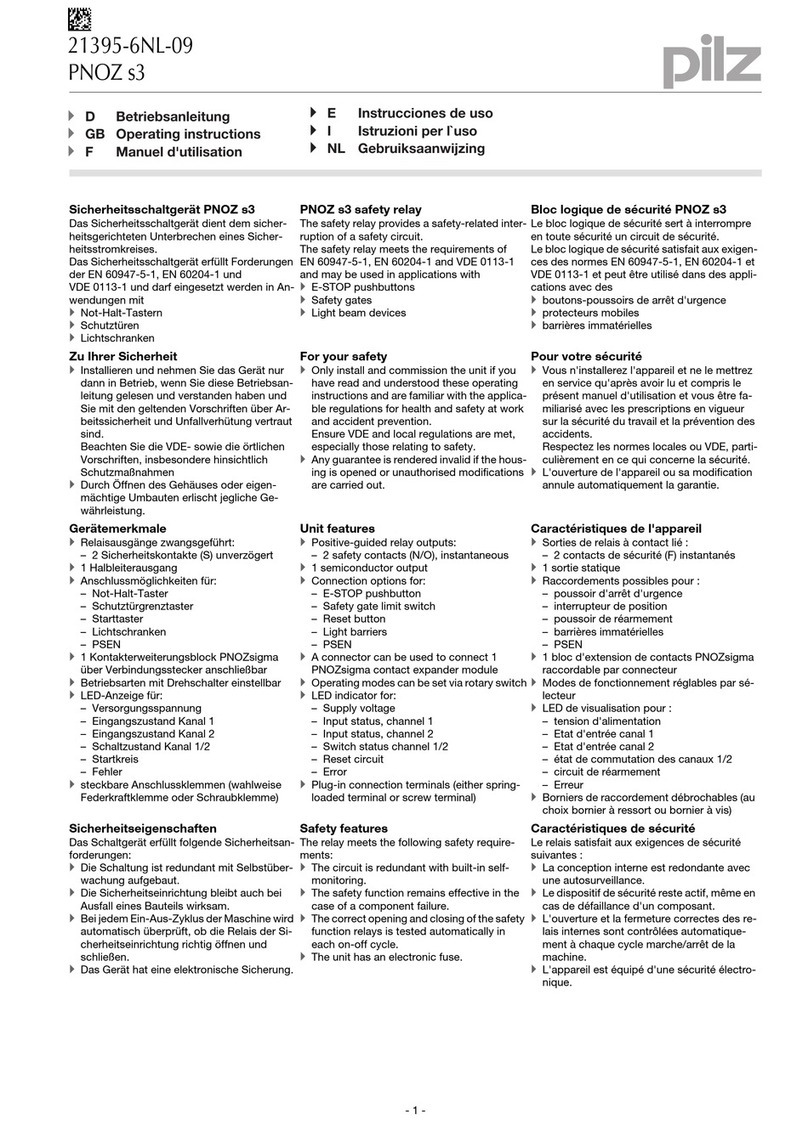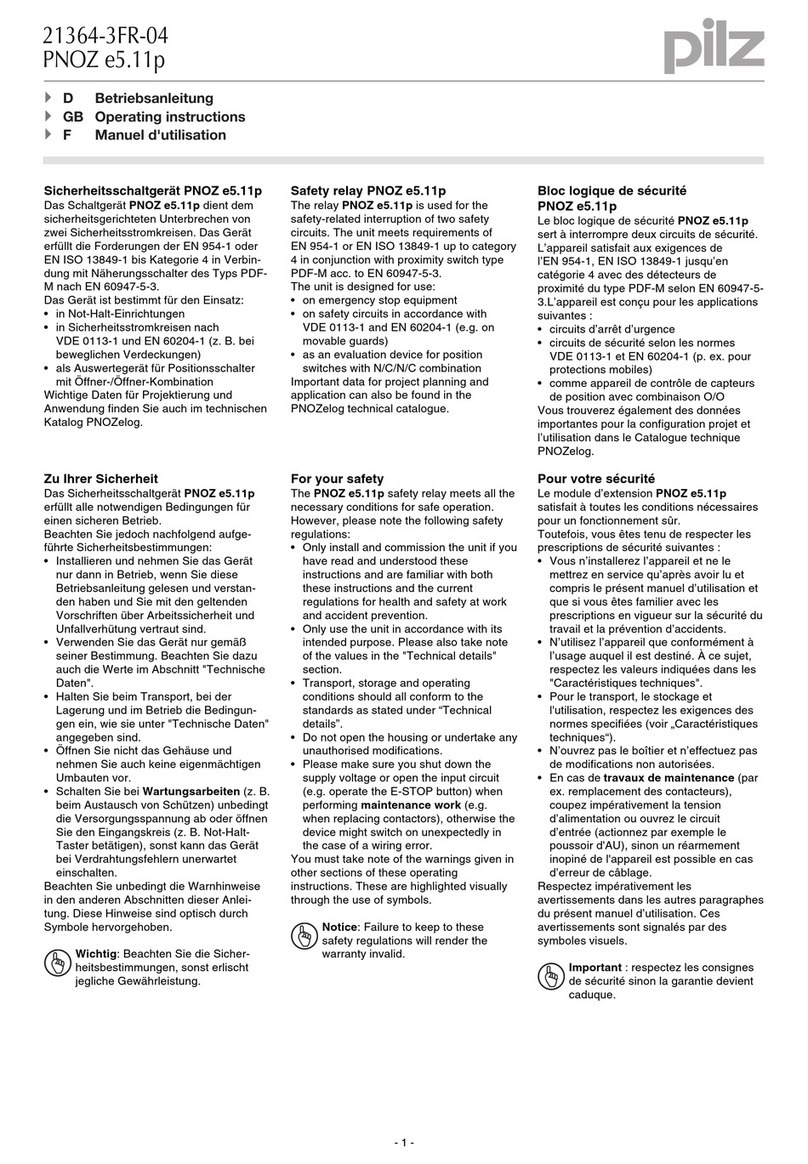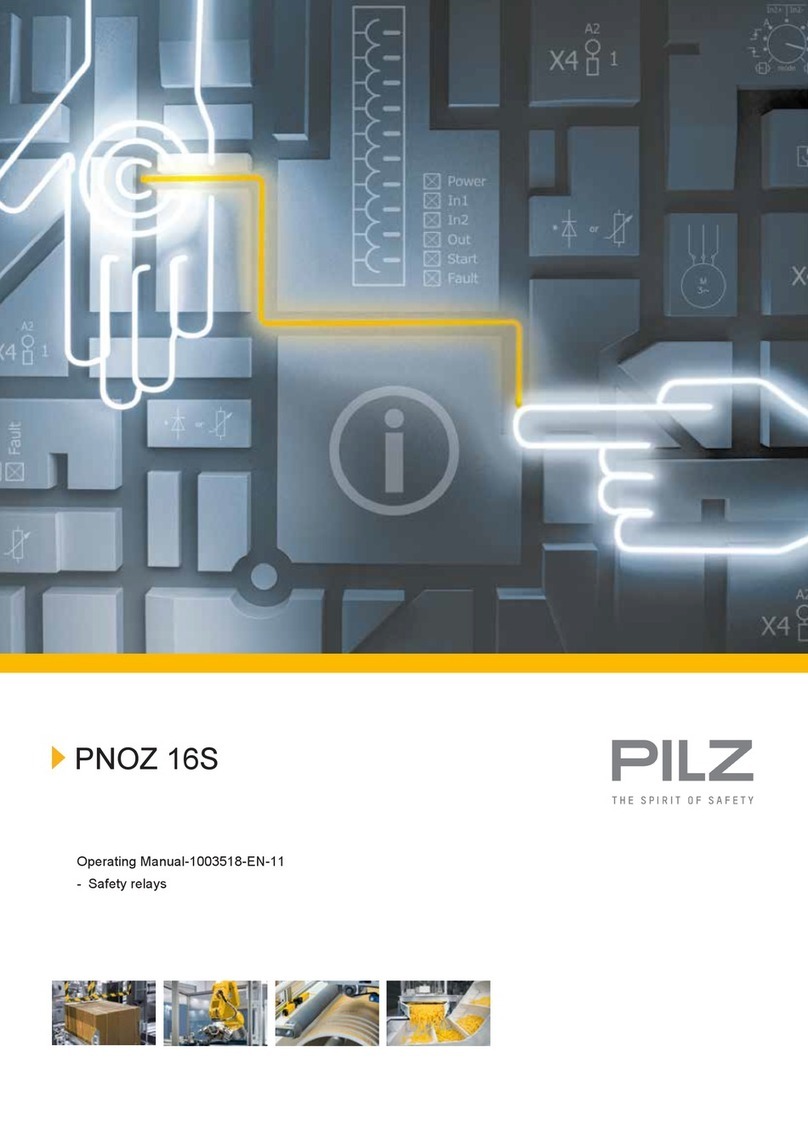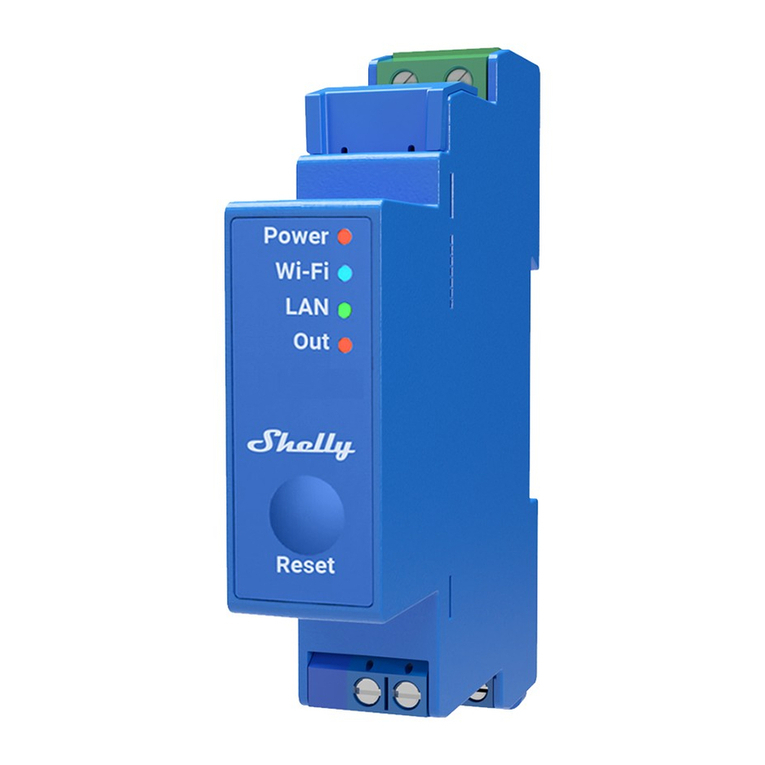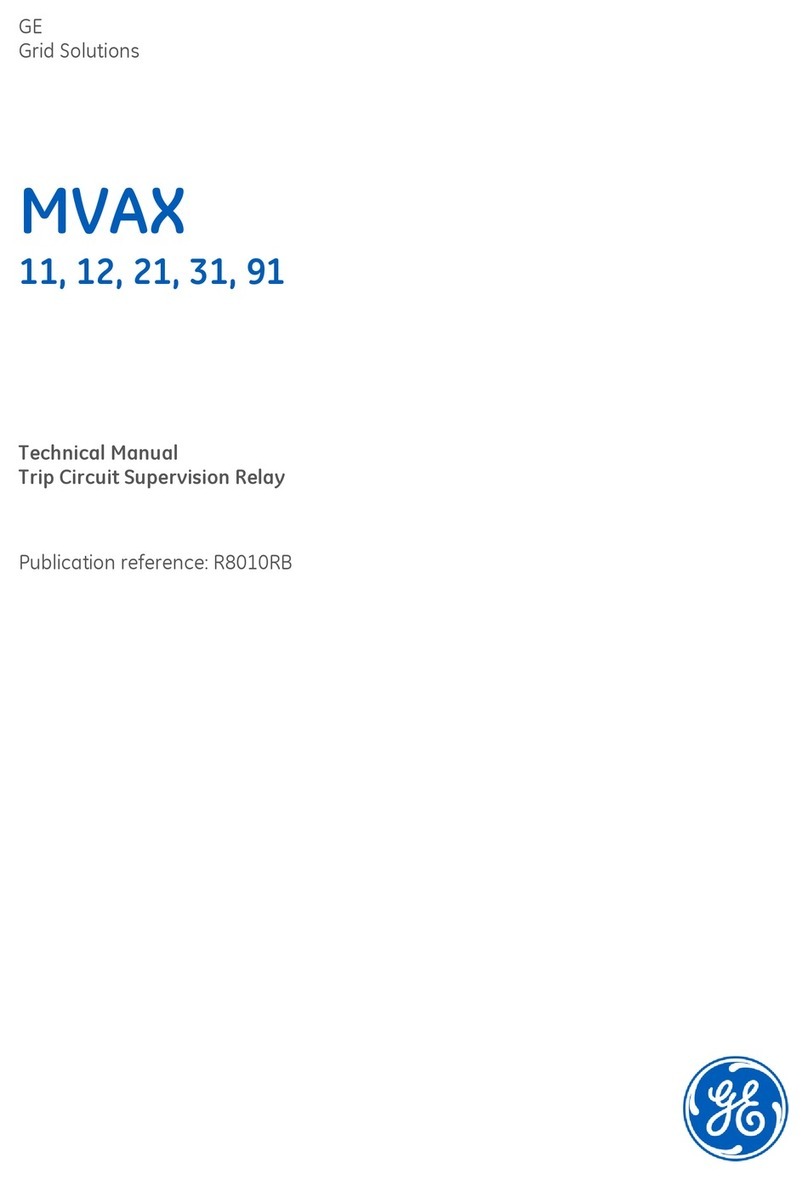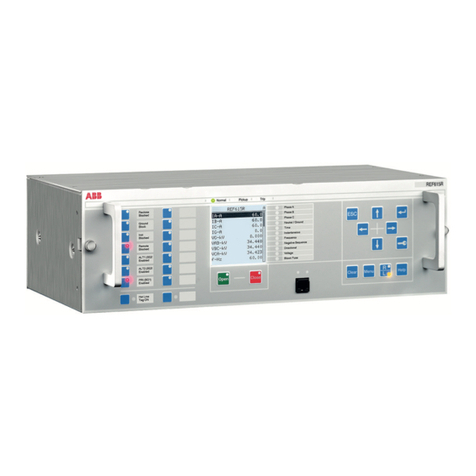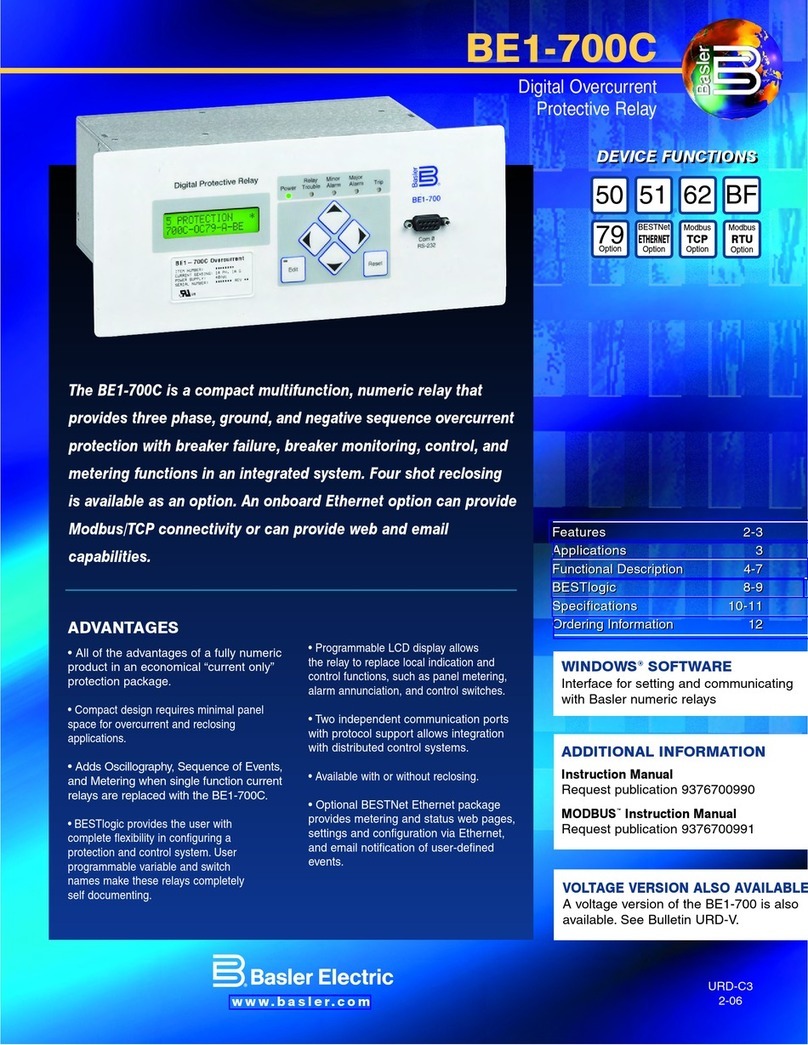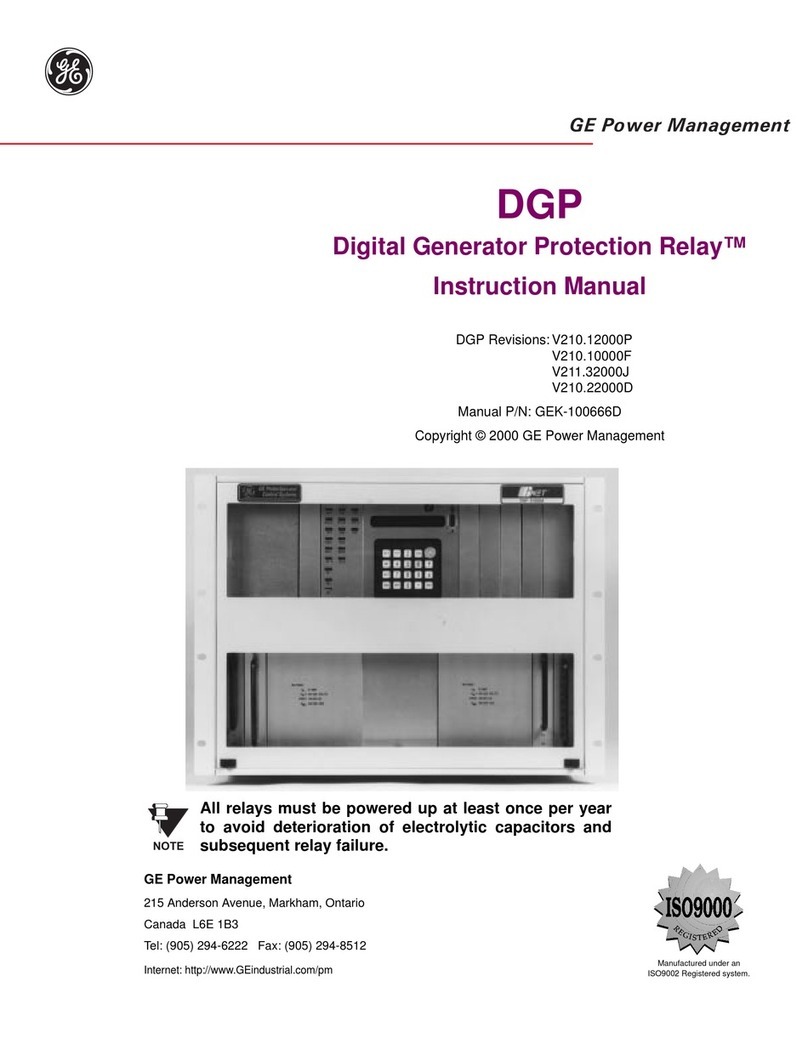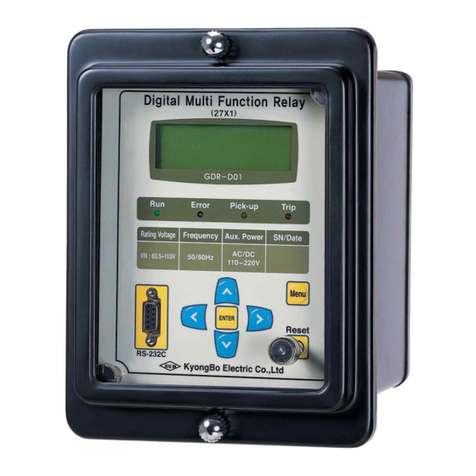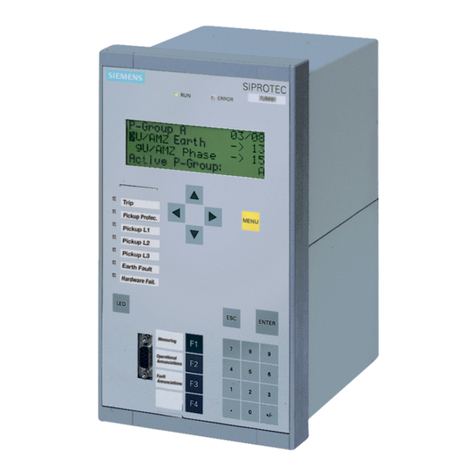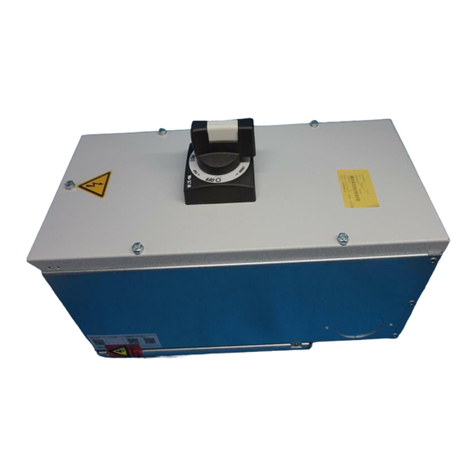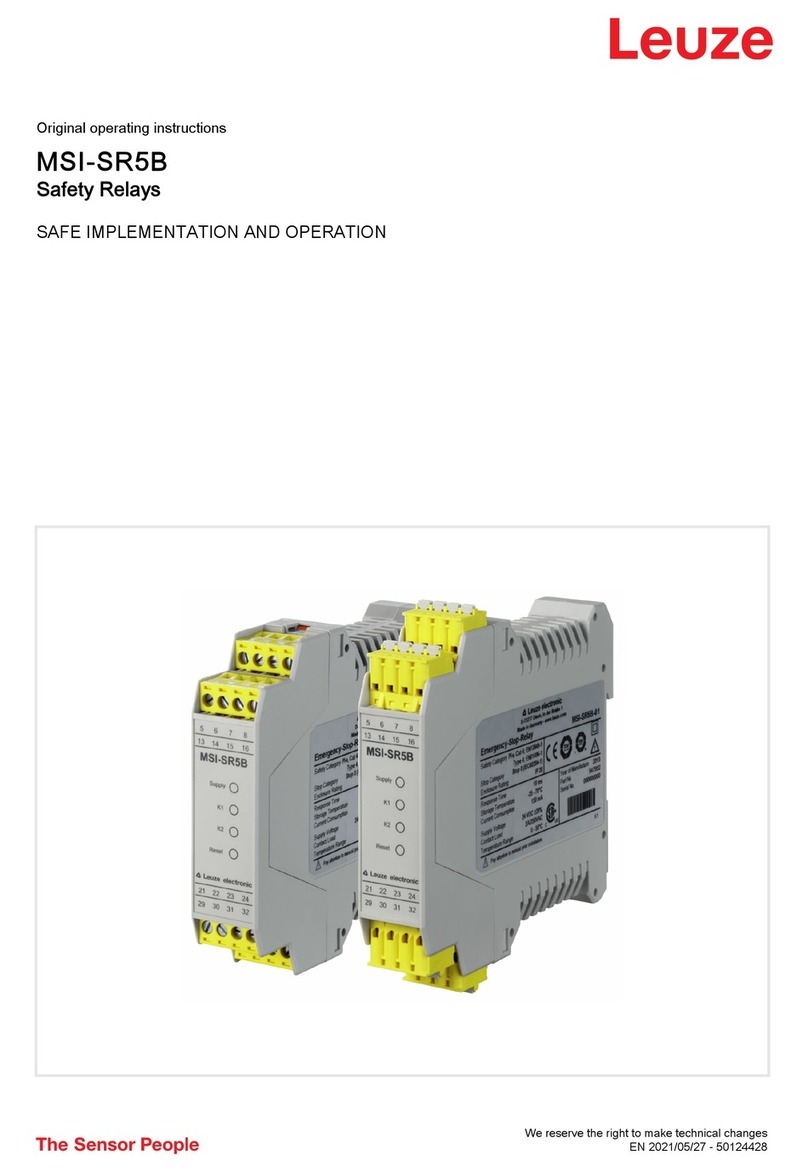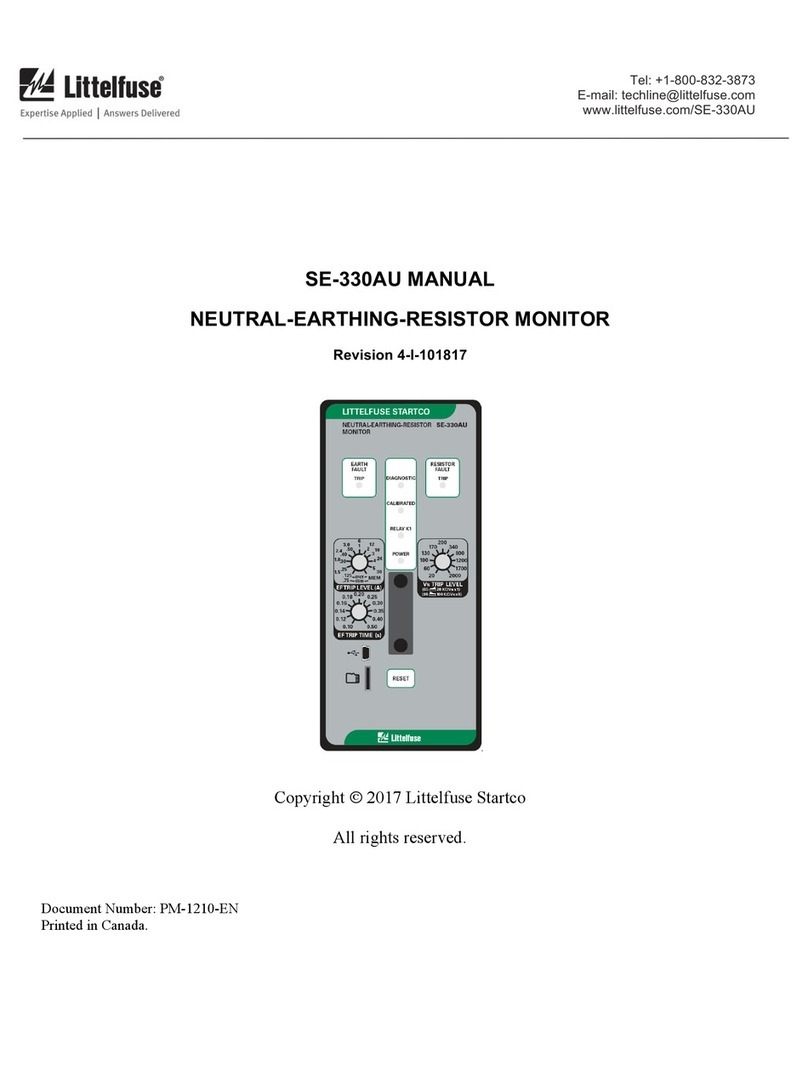
- 3 -
Inbetriebnahme
Beachten Sie bei der Inbetriebnahme:
• Nur die Ausgangskontakte 13-14/23-24/
33-34 sind Sicherheitskontakte.
Ausgangskontakte 41-42 und 53-54 sind
Hilfskontakte (z. B. für Anzeige).
•Vor die Ausgangskontakte eine Siche-
rung (s. "Technische Daten") schal-
ten, um das Verschweißen der
Kontakte zu verhindern.
• Eingangskreis
Temperatur: +25 °C
Max. Leitungslängen:
1kan. ohne Querschlusserkennung:
- Leiterquerschnitt: 1,5 mm2
DC: 3500 m
2kan. mit Querschlusserkennung:
- Leiterquerschnitt: 1,5 mm2
DC: 300 m
- Leiterquerschnitt: 2,5 mm2
DC: 500 m
Da die Funktion Querschlusserkennung
nicht einfehlersicher ist, wird sie von Pilz
während der Endkontrolle geprüft. Eine
Überprüfung nach der Installation des Ge-
räts ist wie folgt möglich:
1. Gerät betriebsbereit (Ausgangs-
kontakte geschlossen)
2. Die Testklemmen S12/S22 zur
Querschlussprüfung kurzschließen.
3. Die Sicherung im Gerät muss
auslösen und die Ausgangskontakte
öffnen. Leitungslängen in der Größen-
ordnung der Maximallänge können das
Auslösen der Sicherung um bis zu 2
Minuten verzögern.
4. Sicherung wieder zurücksetzen: den
Kurzschluss entfernen und Reset-Taste
mit einem schmalen Gegenstand (z. B.
Schraubendreher, Bleistift) betätigen.
• Leitungsmaterial aus Kupferdraht mit
einer Temperaturbeständigkeit von
60/75 °C verwenden.
• Angaben im Kapitel "Technische Daten"
unbedingt einhalten.
• Die Kontakte S11 und S33 sowie Y1 und
S34 sind identisch und können wahlwei-
se verwendet werden.
Ablauf:
• Versorgungsspannung an Klemmen A1
(+) und A2 (-) anlegen.
DC: Klemme A2 (-) mit geerdeter Seite
der Versorgungsspannung verbinden.
Die LED "Netz" leuchtet.
• Für Halbleiterausgang 24-V-Versor-
gungsspannung an Klemmen Y30 (0 V)
und Y31 (+24 V) anschließen.
• Rückführkreis:
Brücke an Y1-Y2 oder externe Schütze
anschließen.
•
Eingangskreis:
- Einkanalig: S21-S22 und S12-S52
brücken. Öffnerkontakt von Auslöse-
element an S12 und S11 anschließen.
- Zweikanalig ohne Querschluss-
erkennung: S21- S22 brücken;
Öffnerkontakt von Auslöseelement an
S11-S12/S11-S52 anschließen.
- Zweikanalig mit Querschluss-
erkennung: S11-S52 brücken;
Öffnerkontakt von Auslöseelement an
S11-S12/S21-S22 anschließen.
• Startkreis:
Einkanaliger Betrieb und zweikanaliger
Betrieb ohne Querschlusserkennung
(zweikanalig gegen +24 V geschaltet):
- Automatischer Start: S33-S34 brücken.
- Manueller Start: Taster zwischen S33-
S34
Mise en oeuvre
Remarques préléminaires:
• Seuls les contacts 13-14/23-24/33-34
sont des contacts de sécurité. Les
contact 41-42 et 53-54 sont des contacts
d'information.
• Protection des contacts de sortie par
des fusibles (caractéristiques
techniques) pour éviter leur soudage.
• Circuit d’entrée
température: +25 °C
longueur maxi. câblage:
1 CH. sans détection de court-circuit
- câble: 1,5 mm2
DC: 3500 m
2 CH. avec détection de court-circuit
- câble: 1,5 mm2
DC: 300 m
- câble: 2,5 mm2
DC: 500 m
La fonction de détection de court-circuit est
testé par Pilz lors du contrôle final. Un test
sur site est possible de la façon suivante:
1. Appareil en fonction (contacts de sortie
fermés)
2. Court-circuiter les bornes de
raccordement nécessaires au test S12/S22
3. Le fusible interne du relais doit déclencher
et les contacts de sortie doivent s‘ouvrir.
Le temps de réponse du fuisible peut aller
jusqu‘à 2 min. si les longueurs de câblage
sont proches des valeurs maximales.
4. Réarmement du fusible: enlever le
court-circuit et réarmer la protection
(action sur le BP à l'aide d'un petit
tournevis ou d'un stylo).
• Utiliser uniquement des fils de câblage en
cuivre 60/75 °C.
• Respectez les données indiquées dans
les caractéristiques techniques.
• Les bornes S11 et S33 ainsi que Y1 et
S34 sont identiques et peuvent être
utilisées indifféremment.
Mise en oeuvre:
• Amener la tension d'alimentation A1 (+)
et A2 (-):
- DC: borne A2 à relier au "-"
la LED "Netz" est allumée.
• Pour la sortie statique Y35, amener le
+24 V sur la borne Y31 et le 0 V sur Y30.
• Fermer la boucle de retour:
pont entre Y1-Y2 ou câblage des
contacts externes.
• Circuits d’entrée:
- Commande par 1 canal : câblage du
contact à ouverture entre S11-S12,
pontage entre S21-S22 et S12-S52
- Commande par 2 canaux sans
détection de courts-circuits : câblage
des contacts à ouverture entre S11-
S12/S11-S52 , pontage de S21-S22
- Commande par 2 canaux avec
détection de courts-circuits : câblage
des contacts à ouverture entre S11-
S12/S21-S22 , pontage de S11-S52
• Circuit de réarmement:
Commande mono-canal et en 2 canaux
sans détection de courts-circuits entre les
canaux (les 2 canaux reliés an +24 V):
- Réarmement automatique: pontage des
bornes S33-S34
- Réarmement manuel: câblage d’un
poussoir sur S33-S34
Operation
Please note for Operation:
Only the output contacts 13-14/23-24/33-34
are safety cotacts. Output contacts 41 -
42 and 53 - 54 are auxiliary contacts (e.g.
for a display).
• To prevent a welding together of the
contacts, a fuse (see 'Technical
Details') must be connected in series
with the output contacts.
• Input Circuit
Temperature: +25 °C
Max. cable lengths:
1ch. no s/c detection:
- Cable: 1.5 mm2
DC: 3500 m
2ch. with s/c detection:
- Cable: 1.5 mm2
DC: 300 m
- Cable: 2,5 mm2
DC: 500 m
As the function for detecting shorts across
the inputs is not failsafe, it is tested by Pilz
during the final control check. However, a
test is possible after installing the unit and
it can be carried out as follows:
1. Unit ready for operation (output contacts
closed)
2. Short circuit the test (connection) terminals
S12/S22 for detecting shorts across the inputs
3. The unit‘s fuse must be triggered and
the output contacts must open. Cable
lengths in the scale of the maximum
length can delay the fuse triggering for up to
2 minutes.
4. Reset the fuse: remove the short circuit
and activate the reset button with a small
implement (e.g. Screwdriver, Pencil).
• Use copper wire that can withstand
60/75 °C.
• Important details in the section "Technical
Data" should be noted and adhered to.
• Contacts S11 and S33 and contacts Y1
and S34 are identical and
interchangeable.
To operate:
• Supply operating voltage to terminals A1
(+) and A2 (-).
Connect terminal A2 (-) with the earthed
side of the operating voltage.
The LED 'Power' illuminates.
• For semiconductor output connect a 24
V supply voltage to the terminals Y30 (0
V) and Y31 (24 V).
• Close the feedback control loop.
Bridge Y1 - Y2 or connect external
contactors/relays.(e.g. E-Stop) to S11 -
S12/S21 - S22 (no bridge on S12 - S22).
• Input circuit:
- Single-channel: Bridge S21-S22 and
S12-S52. Connect N/C contact from
safety switch (e.g. Emergency-Stop) to
S12 and S11.
- Two-channel without detection of shorts
across the contacts: Bridge S21 -S22.
Connect N/C contact from trigger element
(e.g. E-Stop) to S11 - S12/S11 - S52
- Two-channel with detection of shorts
across the contacts: Bridge S11 -S52.
Connect N/C contact from trigger element
(e.g. E-Stop) to S11 - S12/S21 - S22.
• Reset circuit:
Singel-channel operation and dual-channel
operation without detection of shorts across
the contacts (dual-channel switched against
+24 V DC):
- Automatic reset: Bridge S33-S34
- Manual reset: Connect button to S33-S34

